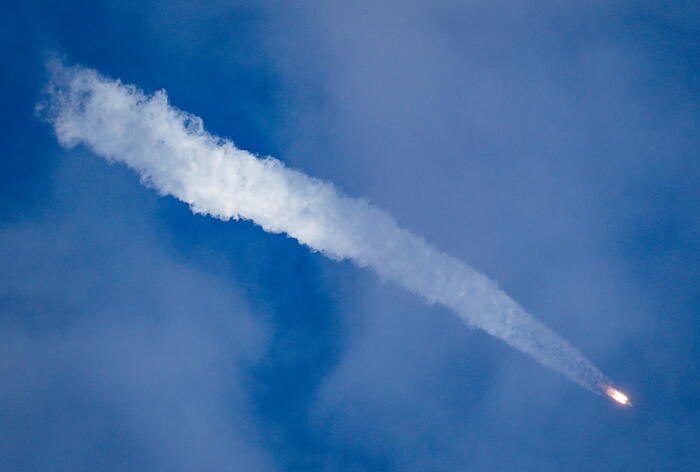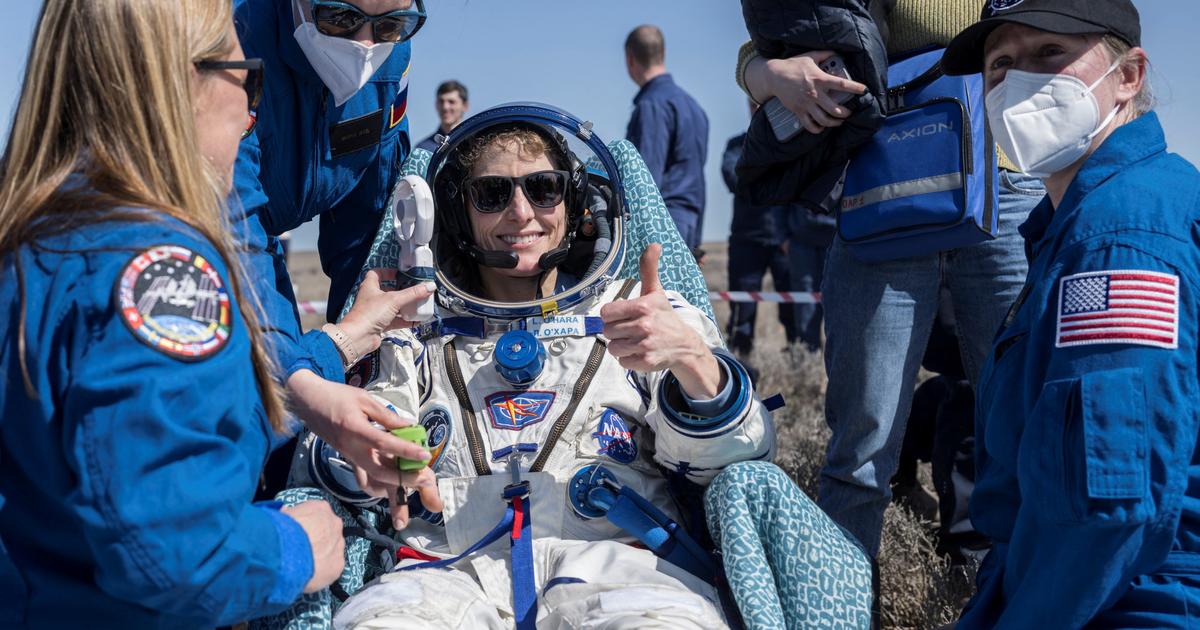After an unsuccessful attempt on Saturday (August 25th), Soyuz managed to dock on Tuesday, August 27, at the International Space Station. On board the spaceship is the humanoid robot Fedor who will assist the astronauts.
An unmanned Soyuz spacecraft carrying the Russian humanoid robot Fedor docked at the International Space Station (ISS), the Russian space agency Roskosmos announced on Tuesday (August 27th). The Soyuz MS-14 docked at the ISS at 03:08, according to a statement posted on the Roskosmos website.
" My apologies for the delay. I was in the traffic jams. I'm ready to continue the work, " reads a message on a Twitter account created for the robot. Able to imitate human movements, Fedor's function will be to help the cosmonauts perform their tasks without being able to move freely in the station.
The robot will assist the astronauts
The ship took off Thursday, August 22 from the Russian cosmodrome Baikonur, Kazakhstan. A first attempted stowage failed this Saturday, August 24. The human-sized robot named Fedor (acronym for Final Experimental Demonstration Object Research) is the first machine of this type sent into space by Russia.
He must stay in the ISS until September 7th to learn how to assist astronauts in the space station.
The Soyuz who put it into orbit carried a cargo of 670 kilograms, "including scientific and medical equipment, components for the life system, as well as containers with food, medicine and hygiene products for them. members of the crew, " Roskomos said.
Success after a setback this Saturday
A commentator on Nasa TV, the US space agency's television channel, which broadcast the stowage live, noted "the perfect approach to the ISS . "
"The second stowage attempt was magnificent," said the commentator. "The crew is now seven," Fedor and the six astronauts who are already on board the ISS, he added. The failure of the Soyuz's first attempt at stowage had been another setback for the Russian space sector, which in recent years has been hit by accidents and corruption scandals.
NASA said on Saturday that the Soyuz "could not lock itself on the station's target" and "had moved away at a safe distance from the orbital complex while Russian flight controllers were studying the next steps. to take .
Hailed by Putin
During a video conference with two Russian cosmonauts on board, President Vladimir Putin spoke of an "abnormal situation" but hailed "a job done brilliantly . "
"I hope that the Fedor robot will give you all the help you need," he said, quoted by the Russian media, of the MAKS air show near Moscow, where he was visiting with his Turkish counterpart Recep Tayyip Erdogan.
The ship took off Thursday from the Russian cosmodrome Baikonur, Kazakhstan. It also carried scientific and medical equipment, food, medicine and hygiene products, according to Roskosmos.
Fedor has accounts on Instagram and Twitter
The controllers told the ISS crew that the problem that had prevented the automatic stowage appeared to be in the station and not in the Soyuz, according to NASA. Last October, a Soyuz with an American astronaut and a Russian astronaut had to make an emergency landing shortly after takeoff.
The Soyuz ships normally have a crew on board, but the one who transported the Fedor robot was unmanned to test a new emergency rescue system. Fedor, a robot with a silver anthropomorphic body, is 1.80 meters tall and weighs 160 kilograms. He has accounts on social networks Instagram and Twitter, which detail his daily life, for example when he learns to open a bottle of water.
On board the ISS, Fedor has to test its capabilities in conditions of very low gravity. His main skills include imitating human movements, which means he can help astronauts perform tasks. This is not the first robot to leave Earth.
Moscow seeks to redress its space industry
In 2011, NASA sent to space a humanoid robot called Robonaut 2, developed in cooperation with General Motors, with the same goal of working in a high-risk environment. He returned in 2018 due to technical problems.
In 2013, Japan sent a small robot, along with the first Japanese commander of the ISS, Koichi Wakata. Developed with Toyota, Kirobo was able to speak, but only in Japanese.
Russia, which remains the only country able to transport humans to the ISS, has been trying for years to rebuild its space industry, a source of immense pride in the Soviet era, but which has been ruined after fall of the USSR. The ISS has orbited the Earth since 1998 at a speed of approximately 28,000 kilometers per hour.
Share this article
The Soyuz vessel carrying the Fedor robot docked at the International Space StationOuest-France.frENLARGE









